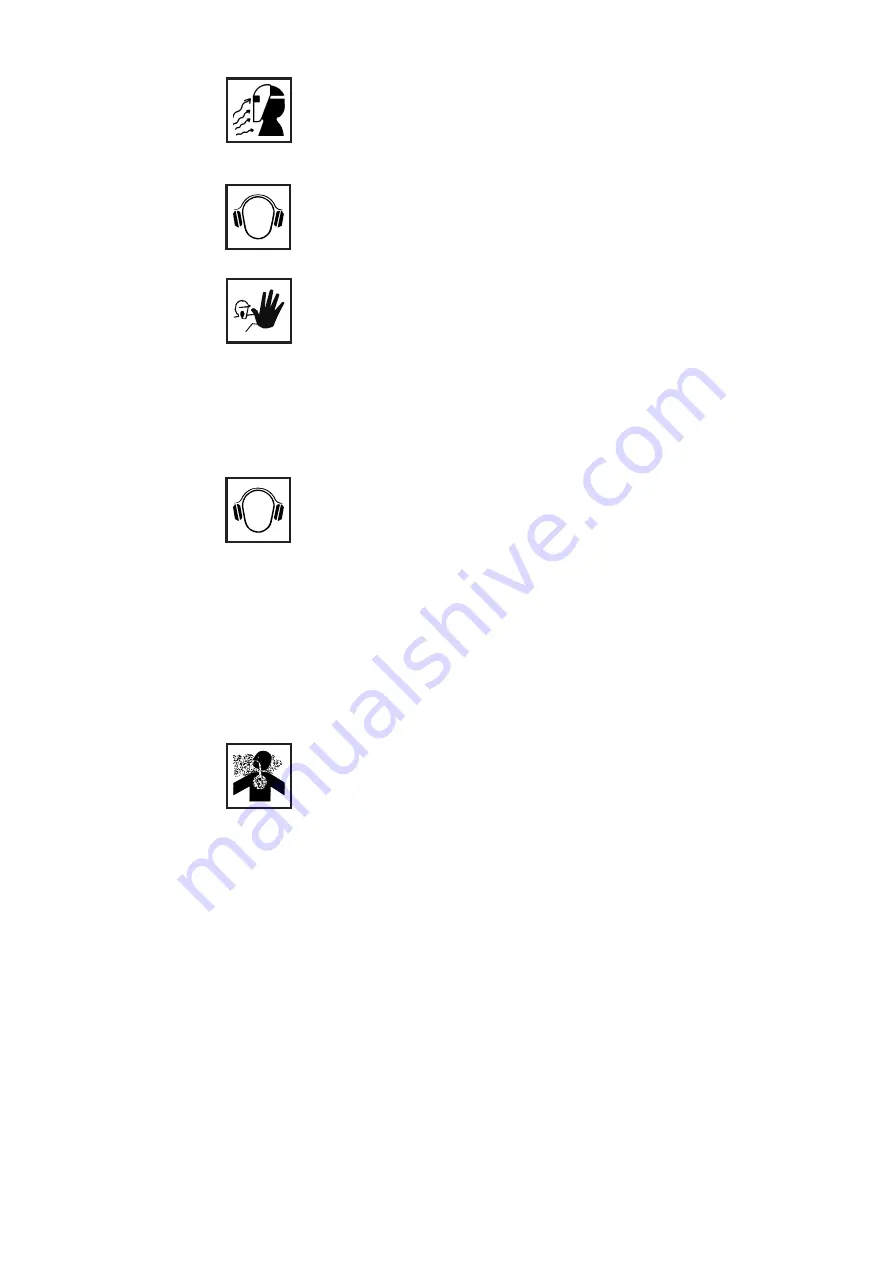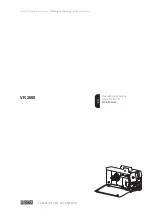
ud_fr_st_sv_00467 022013
IV
The fumes given off during welding contain gases and vapors that are
harmful to health.
Welding fumes contain substances which may cause birth defects and
cancers.
Keep your head away from discharges of welding fumes and gases.
Do not inhale any fumes or noxious gases that are given off.
Extract all fumes and gases away from the workplace, using suitable
means.
Ensure a sufficient supply of fresh air.
Where insufficient ventilation is available, use a respirator mask with an
independent air supply.
If you are not sure whether your fume-extraction system is sufficiently
powerful, compare the measured pollutant emission values with the
permitted threshold limit values.
Close the shielding gas cylinder valve or central gas supply if no welding is
taking place.
Hazards from
noxious gases
and vapours
Keep other people - especially children - well away from the equipment and
the welding operation while this is in progress. If there are still any other
persons nearby during welding, you must
-
draw their attention to all the dangers (risk of being dazzled by the arc or
injured by flying sparks, harmful welding fumes, high noise immission
levels, possible hazards from mains or welding current ...)
-
provide them with suitable protective equipment and/or
-
erect suitable protective partitions or curtains.
Protection for
yourself and
other persons
(continued)
“Protective clothing” also includes:
-
protecting your eyes and face from UV rays, heat and flying sparks with
an appropriate safety shield containing appropriate regulation filter glass
-
wearing a pair of appropriate regulation goggles (with sideguards)
behind the safety shield
-
wearing stout footwear that will also insulate even in wet conditions
-
protecting your hands by wearing appropriate gloves (electrically insula-
ting, heat-proof)
-
To lessen your exposure to noise and to protect your hearing against
injury, wear ear-protectors!
Information on
noise emission
values
The device generates a maximum sound power level of <80 dB(A) (ref. 1pW)
when idling and in the cooling phase following operation at the maximum
permissible operating point under maximum rated load conditions according
to EN 60974-1.
It is not possible to provide a workplace-related emission value during wel-
ding (or cutting) as this is influenced by both the process and the environ-
ment. All manner of different welding parameters come into play, including the
welding process (MIG/MAG, TIG welding), the type of power selected (DC or
AC), the power range, the type of weld metal, the resonance characteristics
of the workpiece, the workplace environment, etc.























